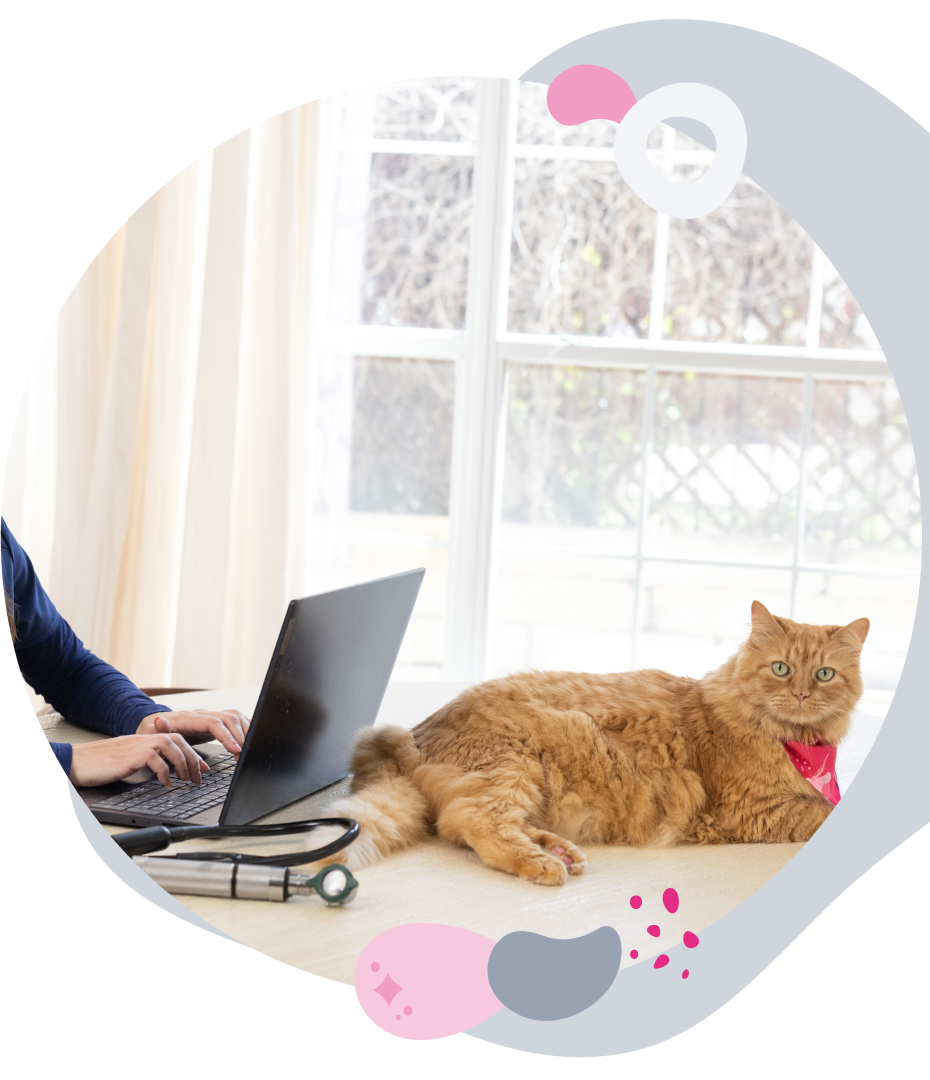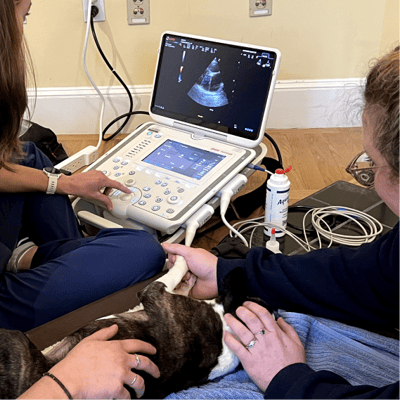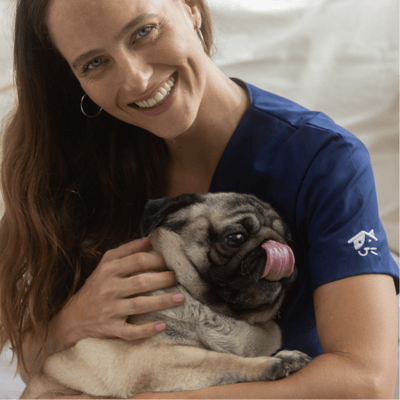
Why BetterVet?
Our mobile veterinarians examine pets in their favorite spot - a comfy couch, a cozy pet bed, or even your lap! See how we work to keep pets relaxed and happy at home.
Ultrasounds are a safe, non-invasive diagnostic imaging tool that allows veterinarians to examine your pet’s internal anatomy.
Note: Veterinary ultrasounds are available in select locations. Your veterinarian may recommend and perform an ultrasound scan during a Sick Exam (for an additional cost).

Based on your location, your veterinarian may be able to provide ultrasound services at home during a physical examination, saving you the time and stress of transporting your pet to a traditional clinic.
A pet ultrasound can help your veterinarian diagnose conditions involving the GI tract and heart, bladder stones, and pregnancy that would otherwise be missed on a routine physical exam.
Our veterinarians are all Fear Free® certified, which means they go above and beyond to minimize stress and anxiety for pets and their parents.
An ultrasound scan is necessary to take a closer look at your pet’s internal organs and can help us detect health issues early so that we can provide the best medical care moving forward.
As with all of our services, our experienced veterinarians will take the time to walk you through the process of your pet’s ultrasound and keep you informed every step of the way.
We take care to make sure your pet’s ultrasound imaging is a stress-free process from start to finish. Some images may require more advanced diagnostic testing or a consultation with a board-certified cardiologist or other veterinary specialist.

Pet ultrasound imaging is usually a pain-free process for your pet, but medication may be prescribed ahead of time to keep them calm during the process. In most cases, your pet’s fur will need to be shaved in the area where the ultrasound examination is to be performed.

Your veterinarian will keep you informed of your pet’s scan results and can address any questions or concerns that you might have. In some cases, a referral to a veterinary specialist may be necessary to interpret the results.

Based on the findings of your pet’s ultrasound scan, your veterinarian will make a treatment plan when necessary, that may include medication, follow-up appointments, or veterinary specialist referrals.

Professional, warm, awesome care for my nervous kitty right at home. So impressed by Dr. Jamie - great with my Kitty, super knowledgeable, approachable. Bloods drawn at home, ultrasound done, and meds on doorstep within 24 hours! All without a dreaded trip to the vet. Cannot recommend more highly!!!
Depending on where you live, many of our veterinarians are able to perform an ultrasound procedure during your pet’s in-home Sick Visit. In some cases, your pet may be referred to a veterinary specialist for more extensive diagnostic testing.
An AFAST (abdominal-focused assessment) and TFAST ultrasound scan (thoracic-focused assessment with sonography for trauma) allows our veterinarians to evaluate a pet’s abdomen or chest for the presence of fluid.
An echocardiogram, also referred to as an echo or cardiac ultrasound, is a diagnostic ultrasound tool that can look at the structure and inside of your pet’s heart.
Typically, a pet ultrasound takes approximately 30-60 minutes. Some pets will tolerate an ultrasound just fine with no sedation. However, others may need sedation to keep calm and still during the painless procedure.
Your veterinarian will tell you ahead of time if there is anything you need to do before your appointment and may prescribe medication for your pet to take ahead of time to help them relax and stay still.
If offered in your area, your pet’s ultrasound may be performed during an in-home Sick Visit. We have flexible appointment times as well as same-day and next-day availability in many locations. Contact your BetterVet veterinarian to request an ultrasound during your pet’s appointment.
You will need to refer to your pet policy or contact your insurer to see if your pet’s ultrasound is a service that is covered. We can provide you with any records or information you’ll need to submit your claim to your insurance company. Please let your veterinarian know what documentation is needed, at the time of your visit.
If your pet’s ultrasound reveals an issue with your pet’s health, your veterinarian will work with you to make the best plan for your pet and will go over any additional monitoring or care that your pet will need.
Your pet should not need any special care following an ultrasound procedure, but depending on the findings of the exam, follow-up care may be necessary. Your veterinarian will go over any instructions and recommendations for your pet.
All of our veterinarians are board-certified in small animal medicine and experienced and qualified to perform ultrasound scans.

Skip the traffic by booking a mobile vet visit with one of our trusted veterinarians. We bring full-service vet care to you!